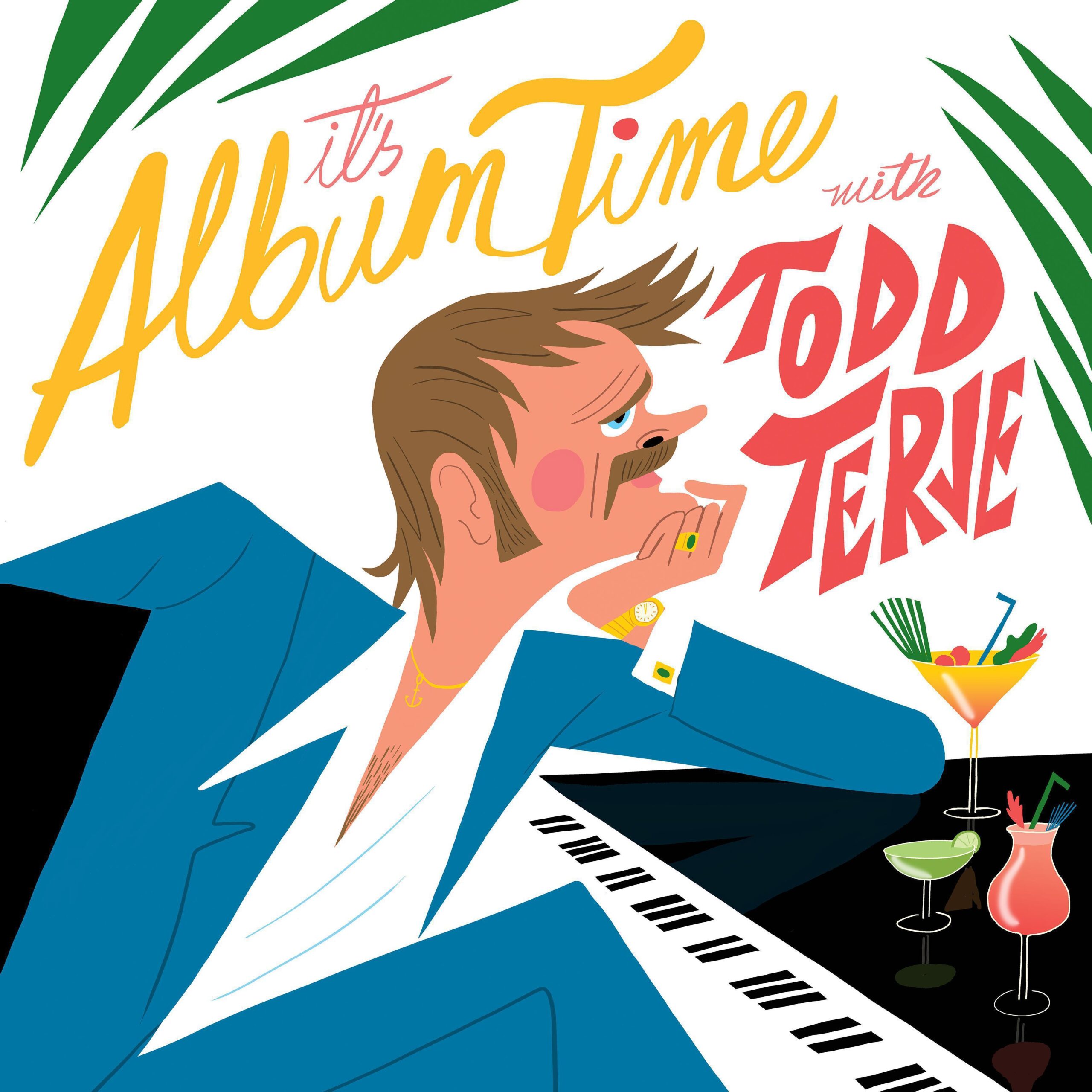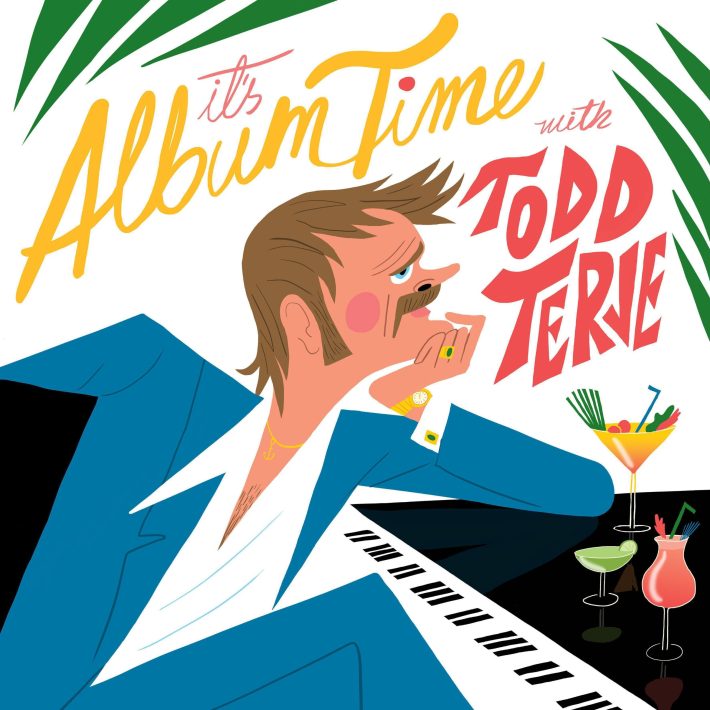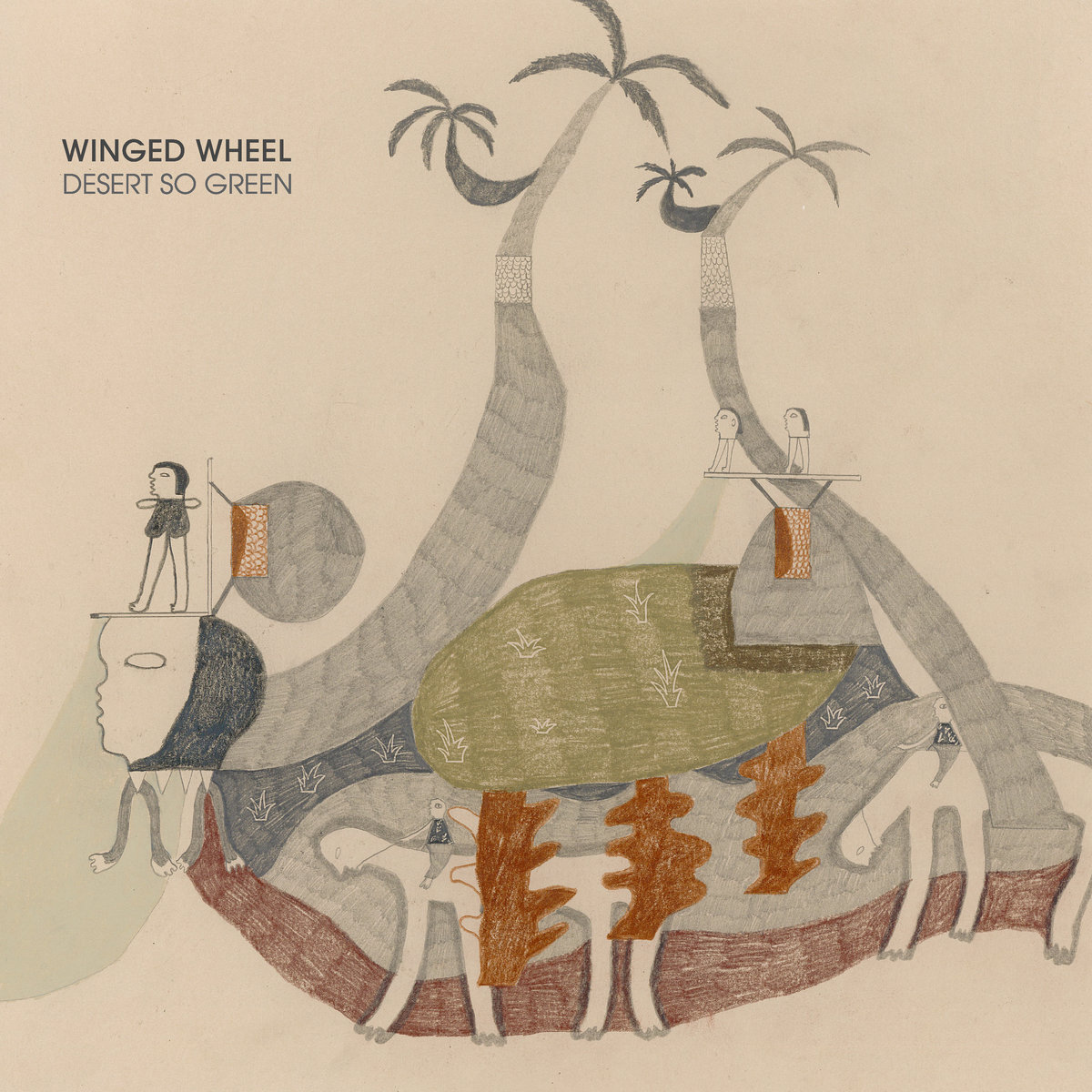- Olsen
- 2014
"Cartoonish" is often used pejoratively. But there's a reason that cartoons have been the reigning entertainment of choice for children and stoners alike for decades: They're colorful, they're accessible, and they're fun. Todd Terje, whose first (and thus far only) album It's Album Time turns 10 years old today, seems to understand that better than most. Much like the literally cartoonish album artwork from New Yorker illustrator Bendik Kaltenborn, Terje's compositions paint with bold strokes and bright colors. Where so much music culture, especially electronic music culture, places value on being cool, Terje dared to make music that's deeply, defiantly silly.
"There's the temptation, for a lot of producers I think, to be seen as grown up, to be seen as serious in order to be taken seriously. They want to make their symphony. What they want to make is what we'll call ‘good' music," Terje told Crack in a 2014 interview. "I just didn't feel the need for an orchestra. Or poetry. Or pretension." His music may not be "good" music, but there's a reason that this very site named a gleefully absurd trifle like It's Album Time one of the best albums of 2014, ahead of fondly remembered classics like Future Islands' Singles, Mitski's Bury Me At Makeout Creek, and Spoon's They Want My Soul.
Todd Terje – pronounced something like "Ter-yeah" – is really Terje Olsen, a Norwegian dance music dork who chose his moniker as a cheeky reference to the pioneering Chicago house DJ Todd Terry. Terje came up in the same Norwegian space-disco micro-scene that birthed Prins Thomas and Hans-Peter Lindstrøm, like-minded artists putting a distinctly Scandinavian spin on Balearic party music. He made a name for himself as a DJ and producer, releasing a bunch of disco edits and remixes and a string of killer singles, and he quickly became a staple of the electronic music scene. Then, after 10 years, he decided it was album time.
If the title of It's Album Time didn't tip you off, its opening salvo "Intro (It's Album Time)" pretty much immediately announces exactly what kind of album this is. Twinkling, planetarium-ready space-age synths set the scene. The drama escalates as horns and a hip-hop beat kick in. "It's album time," a voice whisper-chants over and over. It's somehow both transcendent and ridiculous. Then there's an explosion sound effect, "Leisure Suit Preben" kicks in, and we're off to the races.
There's a now-infamous story where a Norwegian radio station refused to play Terje's music because it sounded like "background music at a beach bar." Which, honestly, is true, albeit not necessarily the put-down that was presumably intended. Everything from the album cover — depicting Terje as a louche, mustachioed lounge lizard with not one but three tropical drinks at the ready — to the breeziness of the music itself, is calibrated to whisk listeners away to the glittering beachside dance party of their dreams.
We rely on reader subscriptions to deliver articles like the one you're reading. Become a member and help support independent media!
Which isn't to say that It's Album Time is all dancefloor bangers. About a third of the tracks on the album, including highlights like "Strandbar," were released in some form before the arrival of It's Album Time, and the more straightforward disco cuts are Terje at his most floor-filling efficient. The rest run the gamut from globe-trotting spy jazz ("Leisure Suit Preben") to the frenetic Latin-tinged scat-singing fever dream of "Svensk Sås," leaning into the retro-futurist kitsch of it all and pulling oft-maligned genres including easy listening, cocktail lounge, and exotica into the same synth-driven orbit like differently themed rooms at a house party. Disco, once considered so dangerously uncool that it sparked a riot at a White Sox game, is basically the closest that Terje gets to "serious" music on It's Album Time.
"I like my music very fruity. Lots of percussion, lots of silly effects. But I still need that dubbiness and spaciousness. It's a strange combination," Terje explained to Resident Advisor in a 2007 interview. "My DJing is silly and effective," he added. "I love when you can combine the weird with the functional," he told SPIN nearly a decade later. "But it's not always easy to do it when you're working with dance music. Slapstick is rarely appreciated by dancers on GHB. Too much stupidity, and you lose functionality, and vice versa it quickly gets boring. With the album format, it was definitely easier to pull it more in the weird direction."
That threading-the-needle duality between silliness and effectiveness, weirdness and functionality, is at the heart of Terje's success. For the magic trick to work, his music has to be unapologetically silly – without being so silly that it stops being enjoyable to listen and dance to. What allows him to pull off the balancing act is genius-level production chops and an incredible facility with melody. While auteurist art is usually supposed to be serious Capital-A art, It's Album Time both poses and answers the question, "What if an electronic music auteur devoted all of the tools in his considerable arsenal to goofing around?" His craft might not be serious, but Terje is absolutely serious about his craft.
Terje has often spoken about being influenced by library music from the ‘60s and ‘70s – stock music recorded specifically to be licensed out for background use in film, television, and radio projects – and the sense of narrative drama that good library music requires infuses all of his work. "What I like about library music is that it's so visual. And I always wanted to do something like that," Terje told FACT. And so "Delorean Dynamite," with its neon-streaked Italo-disco groove, is Terje's "acoustic image of a car racing through Miami with flashing street lights passing by." Although there isn't really an overarching concept or story that ties It's Album Time together, it still feels cohesive, like the expertly curated soundtrack to a non-existent film – or a well sequenced DJ set, perhaps.
The album's literal centerpiece and biggest departure is "Johnny And Mary," a melancholic cover of a Robert Palmer track sung by Roxy Music's eternally debonair frontman Bryan Ferry. It's an outlier by virtue of having actual lyrics, and because it's a shimmering synth ballad about a failing relationship, sung as if Ferry were in danger of disappearing in a cloud of cigarette smoke. The downbeat, downtempo interlude might seem, at first blush, to derail the non-stop party vibes that the rest of the LP seems to be aiming for. But even escapist fantasies need something to escape from, after all, and "Johnny And Mary" provides exactly that with its beautifully tender and affecting portrait of two lost souls in desperate need of some dancefloor catharsis.
"The drop with 'Johnny And Mary' also resembles a good night out," Terje explained to The Fader shortly before the album's release. "I remember this one night in Thessaloniki in Greece many many years ago, where after a couple of hours of playing house and disco, I thought I was putting on an end-of-night ballad, not realizing that's when the party really started! It was then two more hours of 90bpm AOR slow burners that the Greeks loved, and it made it a pretty special night."
And here's where we have to talk about "Inspector Norse." Just as he does with his DJ sets, Terje closes the album with "Inspector Norse," because there's really no other place for it – once you deploy the big guns, there's no going back. "Inspector Norse," originally released on Terje's 2012 EP It's The Arps, remains Terje's most famous track and one of the best party jams of all time. It's deceptively simple but endlessly catchy, with its undulating synth bloops and burbles building themselves up and simmering down until everything in their path is reduced to dizzy, ecstatic joy. It may sound like hyperbole, but in the right circumstances – ideally, a crowd of people losing their shit together on the dance floor – "Inspector Norse" really does have the power to rearrange your brain chemistry and change the entire course of a night out.
Since It's Album Time came out, we've heard precious little from Terje. He toured with a live band. He released a remix EP in 2015 and a covers EP in 2016. In 2017, he shared a new track that was supposedly going to be on a new album with the incredible and characteristic title Numero Twomero, but the LP never materialized – and that was the last we heard from him, aside from semi-regular DJ sets and last year's "veeeery limited edition" 7" single that was limited to 30 numbered copies. In the past several years, disco has made a comeback on the pop charts – the people are ready for more Terje! – but the existence of a new album seems increasingly unlikely. That said, it did take 10 years for us to get one full-length record, so a new album isn't outside the realm of possibility. But even if it's never album time again, we'll always have this one giddily fun, gloriously cartoonish masterpiece that reminds us how liberating it can be to not take yourself too seriously.







